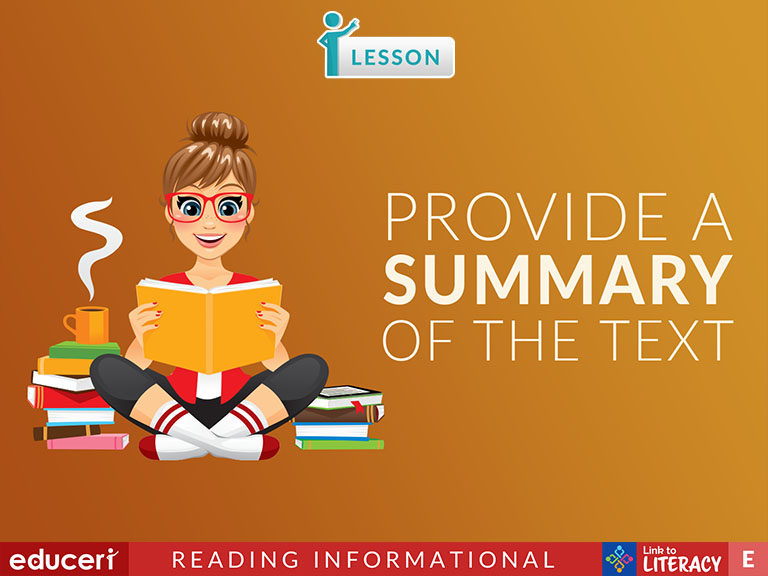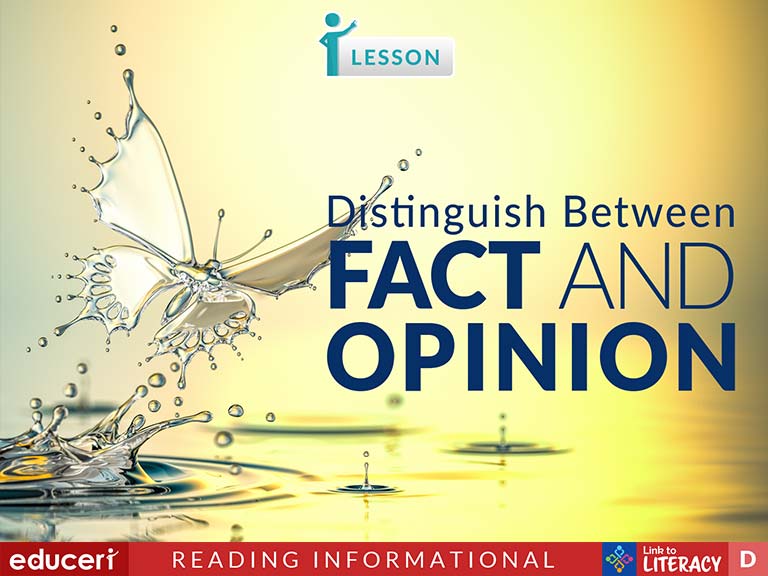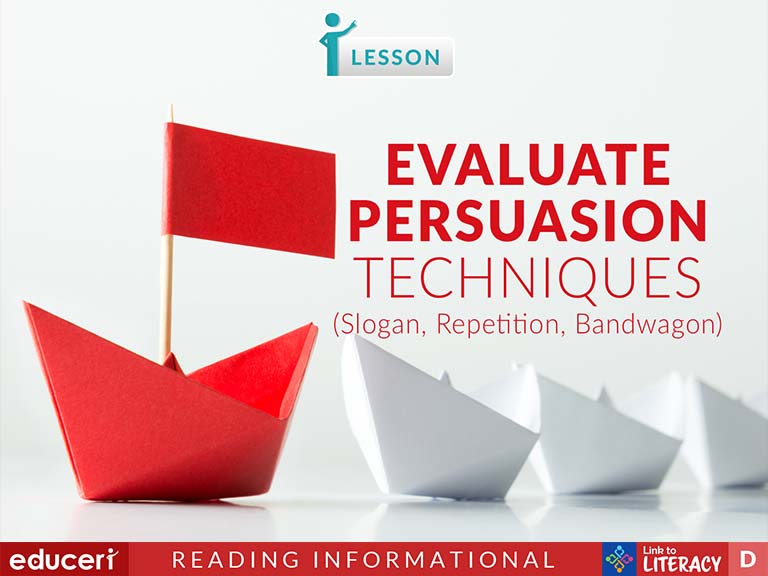Special Program: Grade 7 Summer School
Grade 7 Summer School
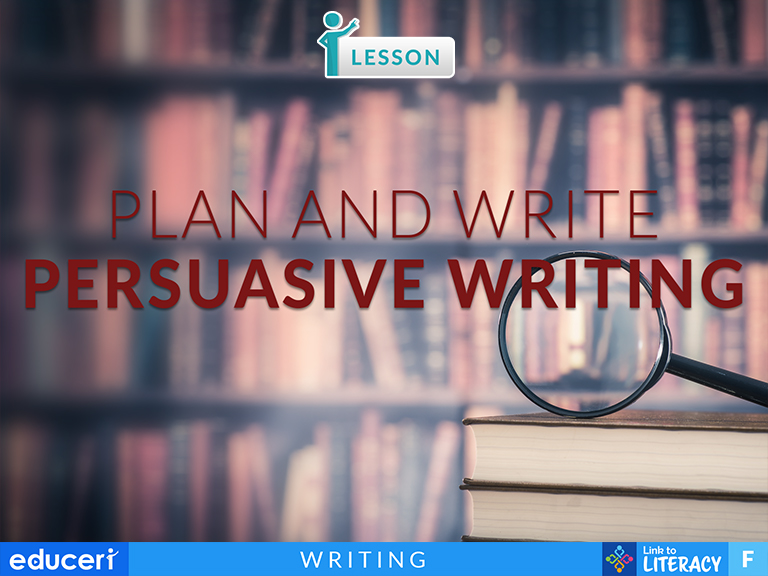
Plan and Write Persuasive Writing
This is a lesson from the Link to Literacy program.
Share This Lesson
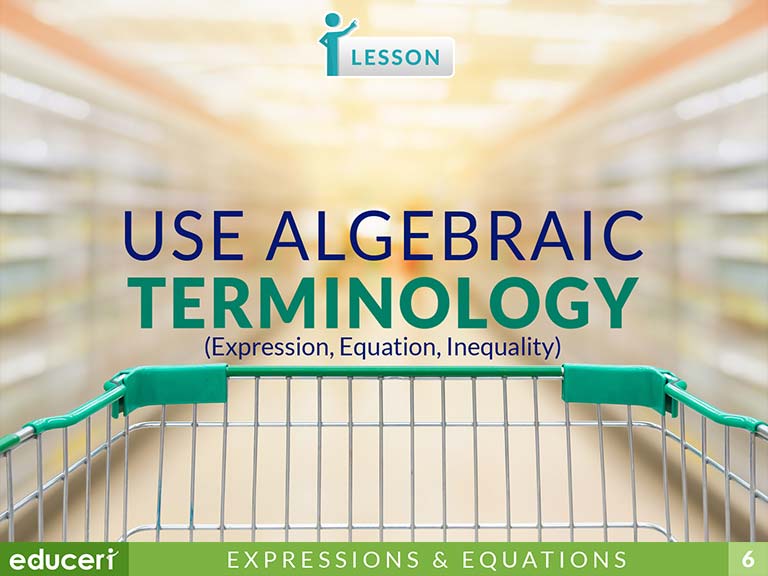
Use Algebraic Terminology (Expression, Equation, Inequality)
6.EE.7 Solve real-world and mathematical problems by writing and solving equations of the form x + p = q and px = q for cases in which p, q and x are all nonnegative rational numbers.
6.EE.86.EE.8 Write an inequality of the form x > c or x < c to represent a constraint or condition in a real-world or mathematical problem. Recognize that inequalities of the form x > c or x < c have infinitely many solutions; represent solutions of such inequalities on number line diagrams.
This equations and expressions lesson covers the use of a variety of algebraic terminology. The lesson includes research-based strategies and strategic questions that prepare students for assessments. In this lesson, students identify the difference between equations and inequalities.
Share This Lesson

Use Equation and Inequality Terminology (Inverse Operation, Solution, Verify)
6.EE.7 Solve real-world and mathematical problems by writing and solving equations of the form x + p = q and px = q for cases in which p, q and x are all nonnegative rational numbers.
6.EE.86.EE.8 Write an inequality of the form x > c or x < c to represent a constraint or condition in a real-world or mathematical problem. Recognize that inequalities of the form x > c or x < c have infinitely many solutions; represent solutions of such inequalities on number line diagrams.
This equations and expressions lesson covers the use of a variety of algebraic terminology. The lesson includes research-based strategies and strategic questions that prepare students for assessments. In this lesson, students describe the inverse operations required to solve algebraic equations.
Share This Lesson
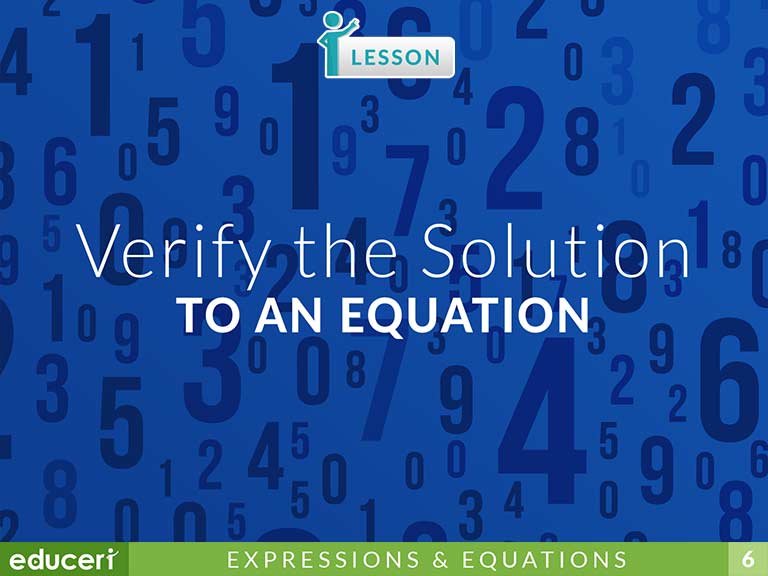
Verify the Solution to an Equation
This expressions and equations lesson teaches students how to verify the solution to an equation. The lesson includes research-based strategies and strategic questions that prepare students for assessments. In this lesson, students substitute a given value for a variable to determine whether or not the value is a solution.
Share This Lesson
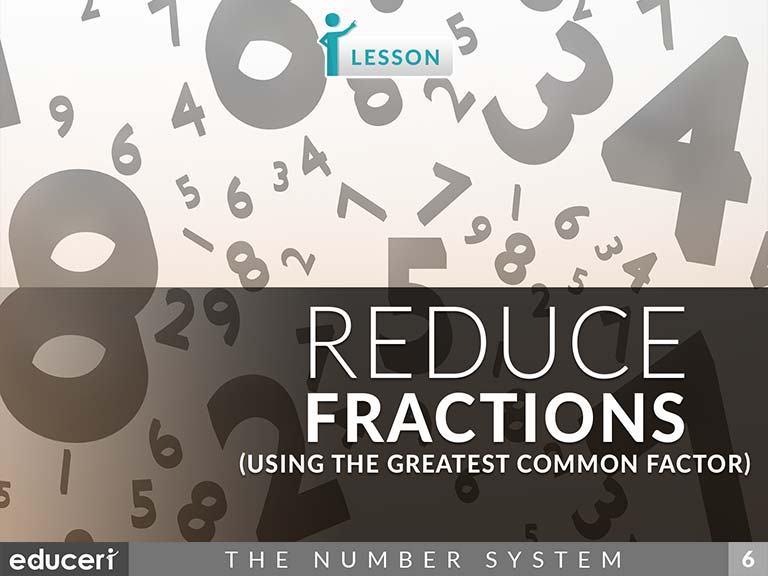
Reduce Fractions (Using the Greatest Common Factor)
This number sense lesson focuses on reducing fractions. The lesson includes research-based strategies and strategic questions that prepare students for assessments. In this lesson, students find the factors of the numerator and denominator. Then, they identify the greatest common factor (GCF) and write it down. Finally, they reduce the fraction by dividing the numerator and denominator by the GCF and interpreting the reduced fraction. In addition to the lesson, there are five pages of Independent Practice and Periodic Reviews with questions modeled after current adaptive testing items and 10 flashcards for reduced fractions.
Share This Lesson
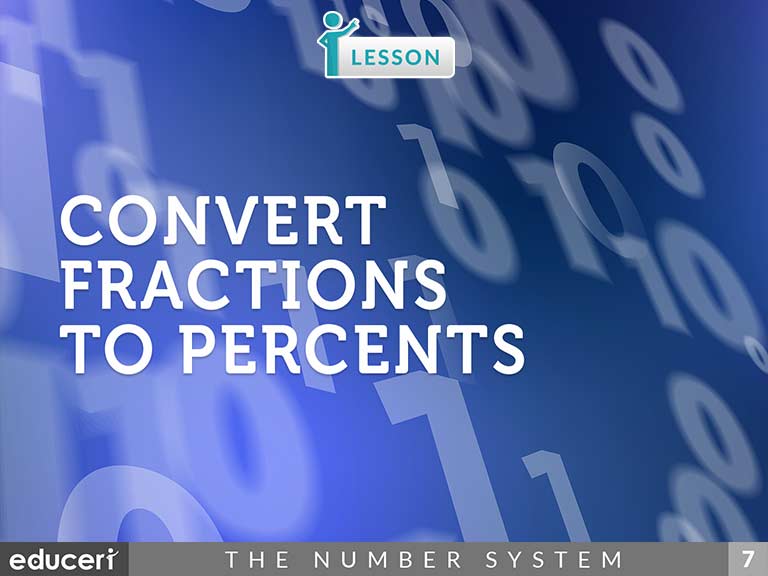
Convert Fractions to Percents
This number sense lesson focuses on converting fractions to percents. The lesson includes research-based strategies and strategic questions that prepare students for assessments. In this lesson, students set up an equation using the percent proportion and the given fraction. Then, they cross multiply and solve the proportion. Finally, they state their answer as a percent by using the provided sentence. In addition to the lesson, there are four pages of Independent Practice and review with questions modeled after current adaptive testing items.
Share This Lesson
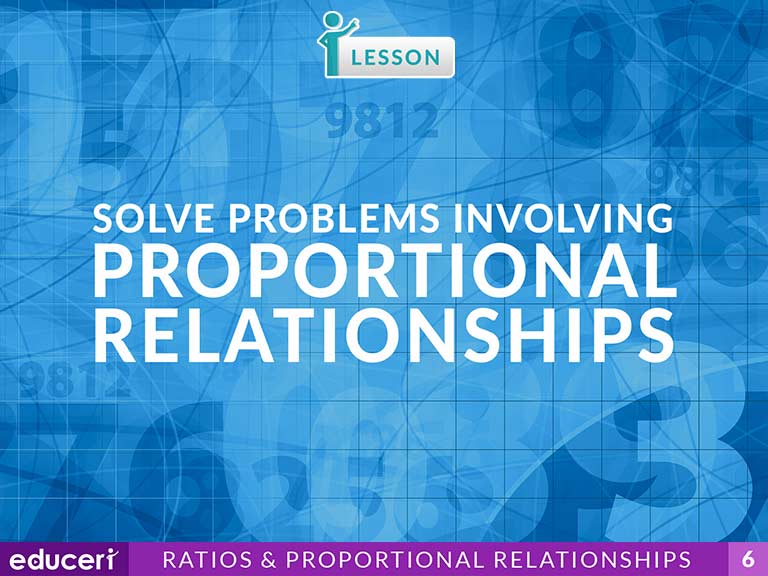
Solve Problems Involving Proportional Relationships
(B) Apply qualitative and quantitative reasoning to solve prediction and comparison of real-world problems involving ratios and rates
6.5.A(A) Represent mathematical and real-world problems involving ratios and rates using scale factors, tables, graphs, and proportions
6.RP.3 Use ratio and rate reasoning to solve real-world and mathematical problems, e.g., by reasoning about tables of equivalent ratios, tape diagrams, double number line diagrams, or equations.
6.RP.3.A6.RP.3.A Make tables of equivalent ratios relating quantities with whole-number measurements, find missing values in the tables, and plot the pairs of values on the coordinate plane. Use tables to compare ratios.
This ratios and proportional relationships lesson teaches students how to solve problems involving proportional relationships. The lesson includes research-based strategies and strategic questions that prepare students for assessments. In this lesson, students will identify a given ratio in a word problem, then the unknown ratio. They will represent the proportional relationship in a table and generate an equivalent ratio to solve for the unknown. Finally, they will interpret the solution.
Share This Lesson
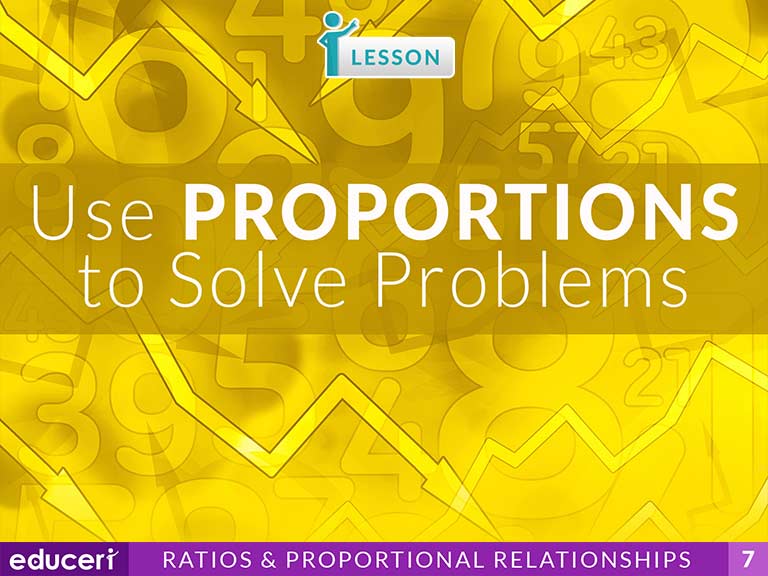
Use Proportions to Solve Problems
7.RP.2 Recognize and represent proportional relationships between quantities.
7.RP.2.C7.RP.2.C Represent proportional relationships by equations. For example, if total cost t is proportional to the number n of items purchased at a constant price p, the relationship between the total cost and the number of items can be expressed as t = pn.
This number sense lesson focuses on using proportions to solve problems. The lesson includes research-based strategies and strategic questions that prepare students for assessments. In this lesson, students read the problem and identify the given ratio. Then, they set up a proportion using the given ratios, if necessary. Finally, they cross-multiply and solve for the unknown value by applying an inverse operation, and then they interpret the solution. In addition to the lesson, there are eight pages of Independent Practice and review with questions modeled after current adaptive testing items.
Share This Lesson
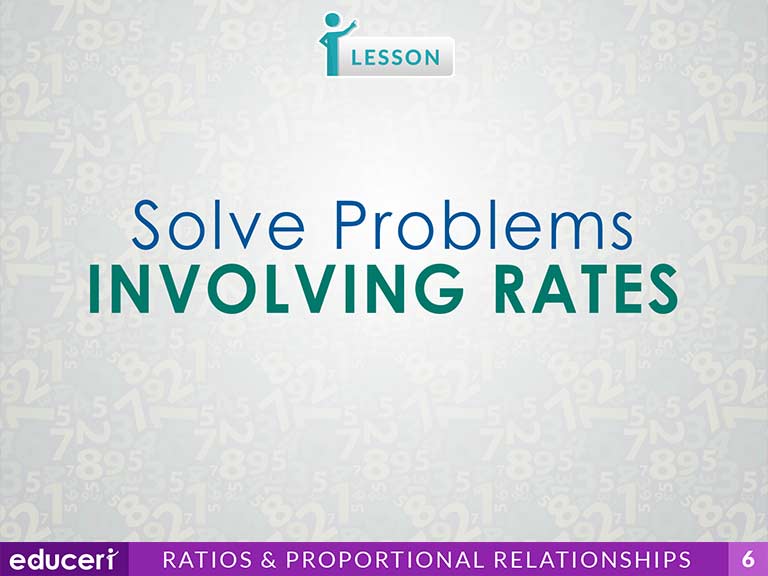
Solve Problems Involving Rates
6.RP.1 Understand the concept of a ratio and use ratio language to describe a ratio relationship between two quantities. For example, "The ratio of wings to beaks in the bird house at the zoo was 2:1, because for every 2 wings there was 1 beak." "For every vote candidate A received, candidate C received nearly three votes."
6.RP.36.RP.3 Use ratio and rate reasoning to solve real-world and mathematical problems, e.g., by reasoning about tables of equivalent ratios, tape diagrams, double number line diagrams, or equations.
6.RP.3.A6.RP.3.A Make tables of equivalent ratios relating quantities with whole-number measurements, find missing values in the tables, and plot the pairs of values on the coordinate plane. Use tables to compare ratios.
6.RP.3.B6.RP.3.B Solve unit rate problems including those involving unit pricing and constant speed. For example, if it took 7 hours to mow 4 lawns, then at that rate, how many lawns could be mowed in 35 hours? At what rate were lawns being mowed?
This algebra and functions lesson focuses on solving problems involving rates. The lesson includes research-based strategies and strategic questions that prepare students for assessments. In this lesson, students read the problem, identifying the given rate and the given and unknown quantities of the other rate. Then, they set up the proportion and solve it by cross-multiplying. Finally, they interpret the solution. In addition to the lesson, there are four pages of Independent Practice and review with questions modeled after current adaptive testing items.
Share This Lesson
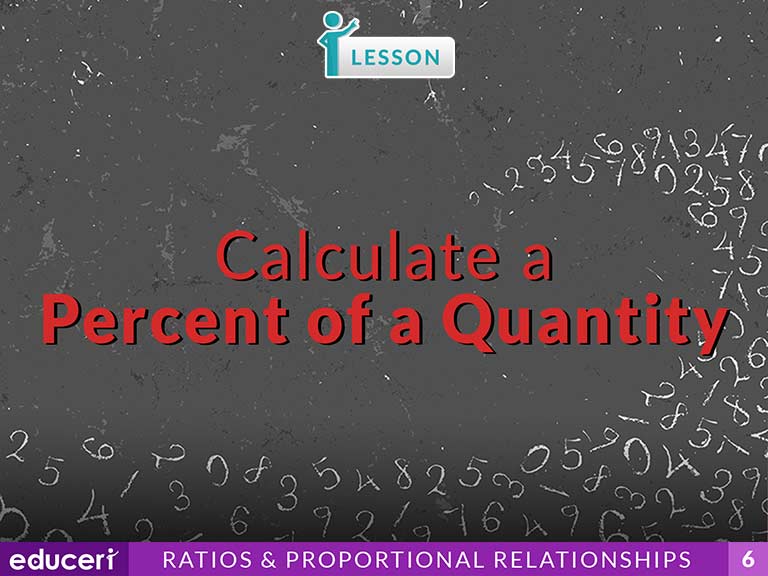
Calculate a Percent of a Quantity
This number sense lesson focuses on calculating a percent of a quantity. The lesson includes research-based strategies and strategic questions that prepare students for assessments. In this lesson, students read the question and identify the percent and quantity. Then, they calculate the percent of a quantity by changing the statement into a multiplication problem and multiplying the quantity by a percent. Finally, they interpret the percent of the quantity. In addition to the lesson, there are ten pages of Independent Practice and Periodic Reviews with questions modeled after current adaptive testing items.
Share This Lesson
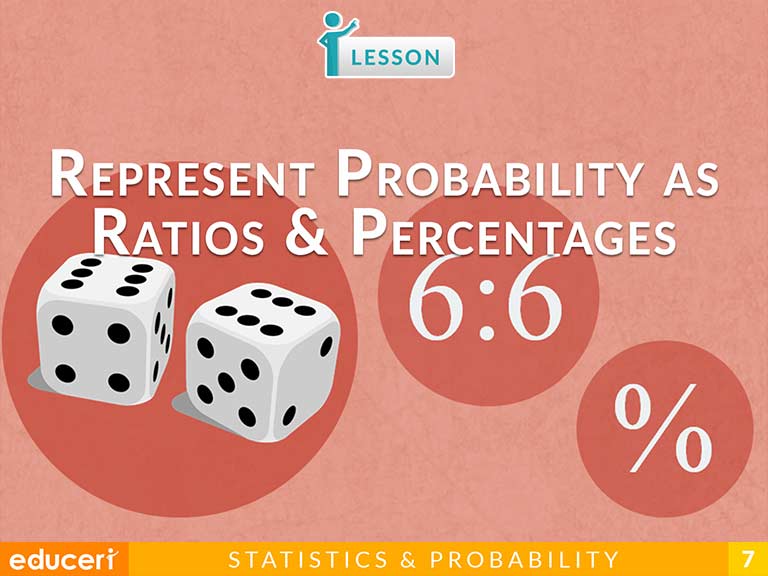
Represent Probability as Ratios & Percentages
This statistics, data analysis, and probability lesson focuses on representing probability as ratios and percentages. The lesson includes research-based strategies and strategic questions that prepare students for assessments. In this lesson, students read the question and identify what probability they are looking for. Then, they write the number of ways the event can occur and determine the number of total outcomes. Finally, they write the probability as a ratio and reduce, if needed, and then write it as a percentage. In addition to the lesson, there are five pages of Independent Practice and review with questions modeled after current adaptive testing items.
Share This Lesson
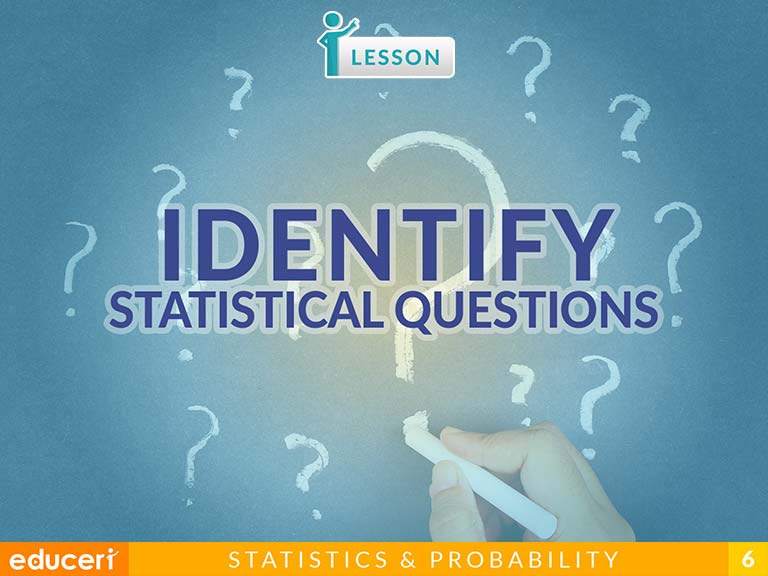
Identify Statistical Questions
(A) Formulate a meaningful question, determine the data needed to answer the question, gather the appropriate data, analyze the data, and draw reasonable conclusions
QR.4.L(L) Determine the need for and purpose of a statistical investigation and what type of statistical analysis can be used to answer a specific question or set of questions
STAT.2.E(E) Formulate a meaningful question, determine the data needed to answer the question, gather the appropriate data, analyze the data, and draw reasonable conclusions
This statistics and probability lesson teaches students how to recognize statistical questions. The lesson includes research-based strategies and strategic questions that prepare students for assessments. In this lesson, students will learn to recognize statistical questions. The focus of this lesson is to familiarize students with statistical questions and how to investigate them.
Share This Lesson
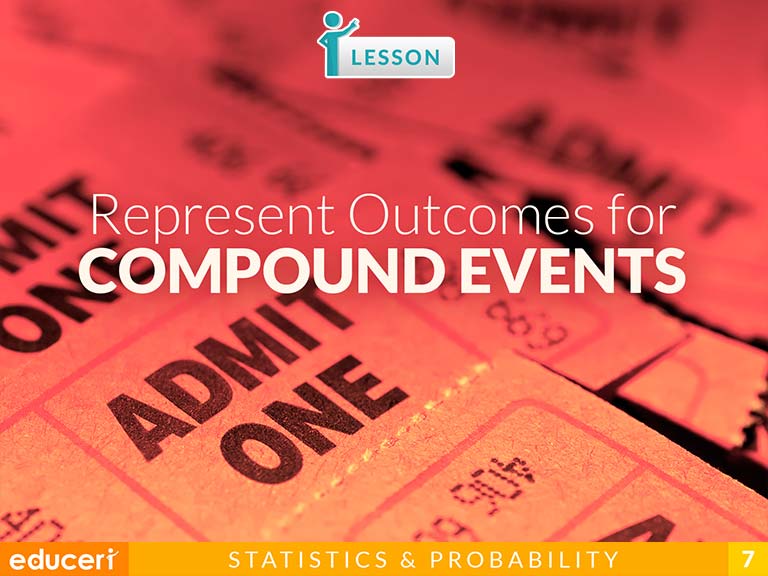
Represent Outcomes for Compound Events
(A) Represent sample spaces for simple and compound events using lists and tree diagrams
7.SP.8 Find probabilities of compound events using organized lists, tables, tree diagrams, and simulation.
7.SP.8.A7.SP.8.A Understand that, just as with simple events, the probability of a compound event is the fraction of outcomes in the sample space for which the compound event occurs.
7.SP.8.B7.SP.8.B Represent sample spaces for compound events using methods such as organized lists, tables and tree diagrams. For an event described in everyday language (e.g., "rolling double sixes"), identify the outcomes in the sample space which compose the event.
This statistics, data analysis, and probability lesson focuses on representing outcomes for compound events. The lesson includes research-based strategies and strategic questions that prepare students for assessments. In this lesson, students read the question and identify the desired outcome. Then, they use a tree diagram or table to determine the outcomes. Finally, they list all the outcomes for the compound event, identify the desired outcomes, and set up a fraction to determine the probability of the event. In addition to the lesson, there are eight pages of Independent Practice and review with questions modeled after current adaptive testing items.
